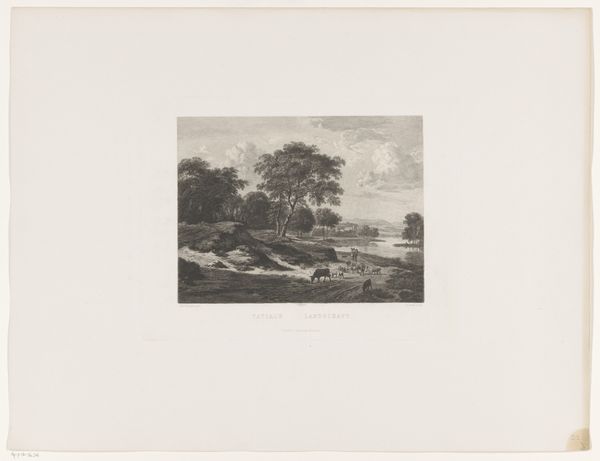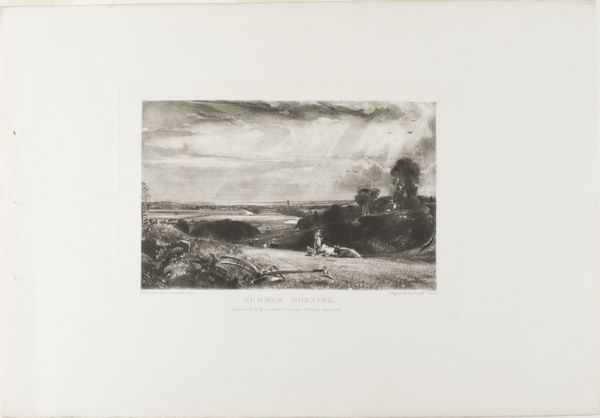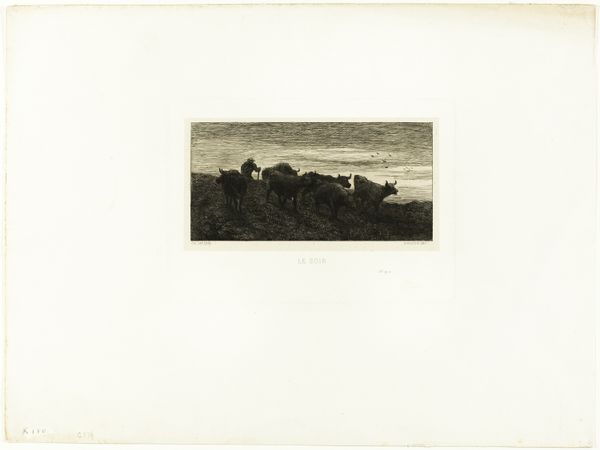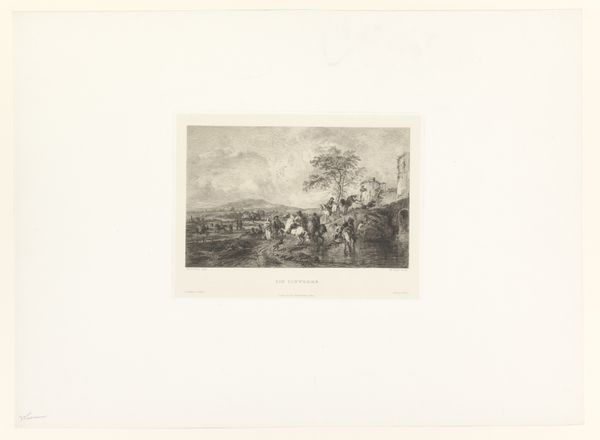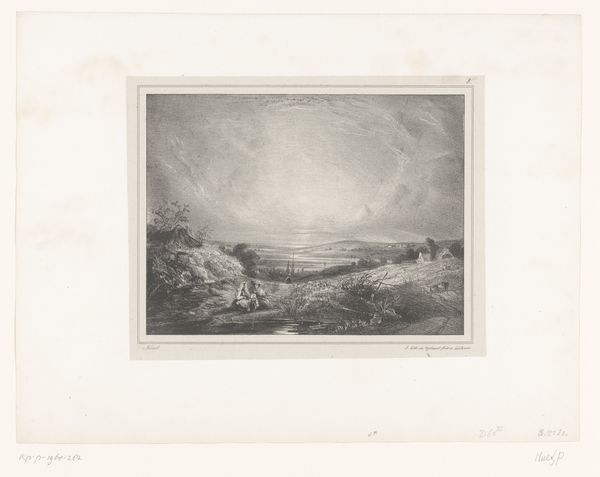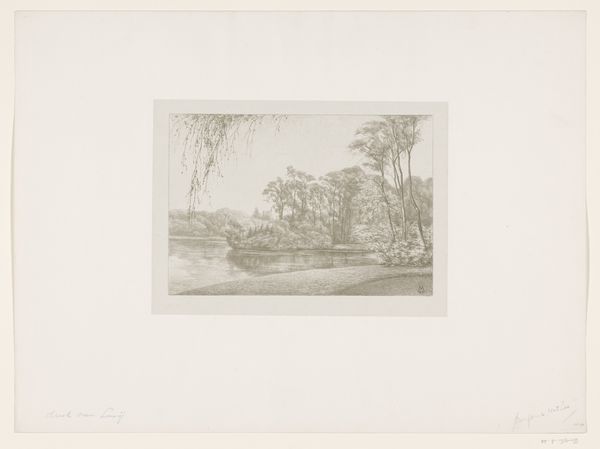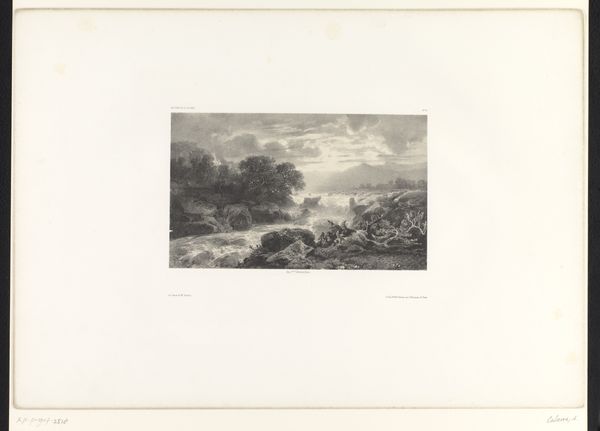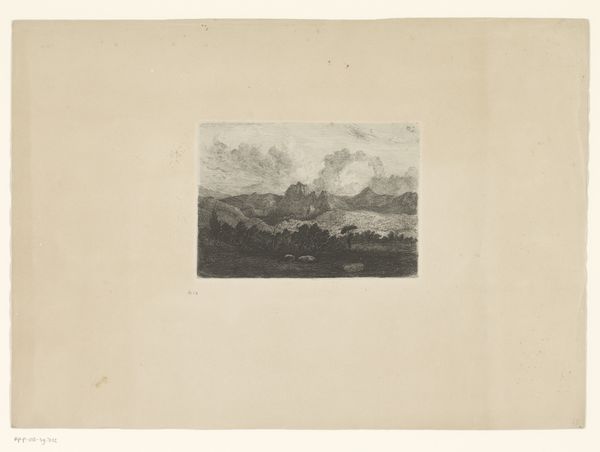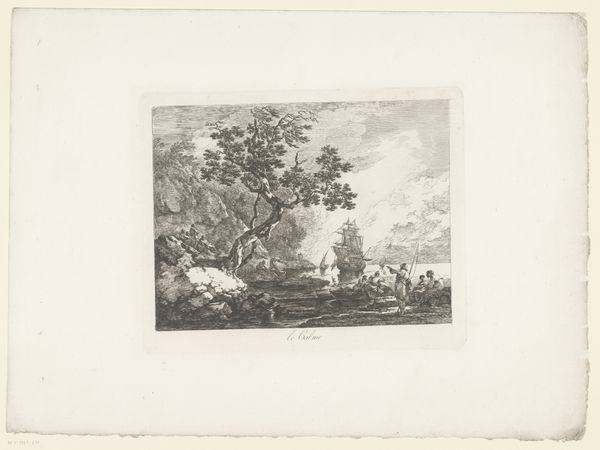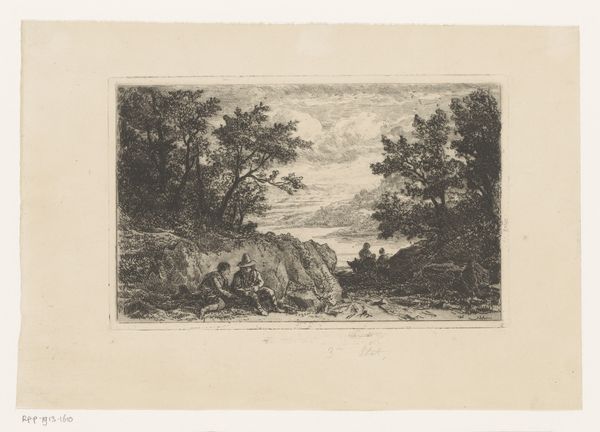
print, etching
#
print photography
#
16_19th-century
# print
#
etching
#
landscape
#
genre-painting
#
realism
#
sea
Dimensions: height 265 mm, width 363 mm
Copyright: Rijks Museum: Open Domain
Curator: Immediately, there’s a sense of profound solitude about this image. The light is soft, the landscape vast, and those sheep seem so very still, lost in thought in a grey world. Editor: That's a great observation! We're looking at "Herder met kudde in de duinen" (Shepherd with flock in the dunes) an etching dating from about 1847-1863 by Johannes Christiaan d'Arnaud Gerkens, on display here at the Rijksmuseum. It's a fantastic example of 19th-century Dutch Realism. These scenes depicted the everyman rather than focusing on idealised images of the wealthy. Curator: I’m immediately drawn to the symbolism of the sheep within a socio-economic context. Were sheep associated with national identity or wealth inequality in 19th century Netherlands? There is an uncanny, almost melancholic weight to the scene. What cultural baggage would a nineteenth-century audience have brought to this imagery? Editor: That's insightful! Think of the visual language of the era: sheep as symbols of pastoral innocence, closeness to nature, but also labor and the rural working class. Their sheer number emphasizes this. But Gerkens places this trope against the stark reality of their environment; their quiet stillness reflects the laborious nature of rural existences in a rapidly industrialising society. This imagery reminds us that even within simple settings, complex class dynamics could emerge in how individuals viewed these artworks. Curator: I find it remarkable how a relatively simple scene is imbued with deeper meaning. I also cannot help but interpret the image through an ecological lens. Here, the pastoral idyll feels strained; one can feel the precarity and tensions between industrialisation and agrarian ways of life that characterised the 19th century. The dunes were rapidly transforming due to the expansion of urban and industrial areas. What does the visual symbol of the flock, or the collective, mean when faced with massive environmental transformation? Editor: That connection is key. By showing us this humble landscape, Gerkens also shows us the fragility of a way of life threatened by these changes. There’s a silent warning woven into the peaceful tableau. These enduring landscapes contain both a beautiful promise and the anxieties and challenges of modernity. Curator: So it goes beyond just a pretty picture. It reflects the cultural memory, anxieties, and realities of a specific time and place. Editor: Precisely! It shows us how the Dutch Romantics saw and negotiated a relationship with their changing environment.
Comments
No comments
Be the first to comment and join the conversation on the ultimate creative platform.
